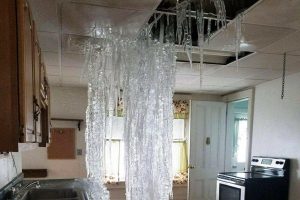
Dear South Texas Friends,
With a harsh cold front moving across Texas, we want to share some helpful tips and resources that you and your friends can use to help protect your home from any impending freeze. Check out this Q&A section, along with the links below, to discover more about preventing frozen pipes and preparing your home for winter storms.
Q: Should we just drip the cold water… Is it important to drip the hot, too?
A: Yes, run both. Most plumbers who repair pipes following a freeze say 70% of the pipes they repair are the hot water pipes. If the pipe is surrounded by cold air, especially cold wind, it will start ice growth. The ice grows from the wall of the pipe inward until it creates a blockage, then ice grows along the length of the pipe. That growth along the length of the pipe acts like a piston that elevates the water pressure in the pipe. It’s the pressure that causes the rupture.
Q: So why does that mean hot water pipes are more likely to burst?
A: It’s the toilet. Often you have one line that feeds a bathroom: the tub, toilet, lavatory all coming off the same line. If you imagine pressure building up in the waterline, all it has to do is force the ball float to go down a little (in the toilet tank), allowing water to dribble into the tank, relieving the pressure on the cold water pipe (The hot water pipe doesn’t have that relief).
Q: Do you need to keep the water running in a pencil-thin stream? Or will just a drip work?
A: It doesn’t matter how fast the drip is. The slower the drip, the less water wasted. The rupture is due to pressure. If you have some kind of pressure relief (by leaving the faucet open), the (ice) piston can keep on pushing, but nothing will rupture.
Q: Should you still run the water if you’ve insulated your pipes?
A: An incomplete insulation job is probably worse than no insulation. If you’re using the foam tubes, you have to look very closely at what’s happening at the plumbing fittings, the elbow, or tee. Lots of times, people will put the tube on the straight section and leave the fittings exposed. You really want to protect the whole pipe and fittings.
Q: Our weather reports always talk about hard freezes and light freezes. When should you worry about your pipes?
A: It’s not just cold temperatures, but cold temperatures blowing on the pipe. The wind is the real kicker. Protecting against drafts is really the key. And we know how hard the breezy it is in South Texas.
We hope you find these tips helpful and that will take action to prevent your home from water damage after the freeze. Our office is here to help you and now is a good time to allow us to review your protection! Call us today at (361) 991-1493 for a free, no obligation insurance protection review!
Because We Care
Ed
Ed Cantu Insurance Agency
